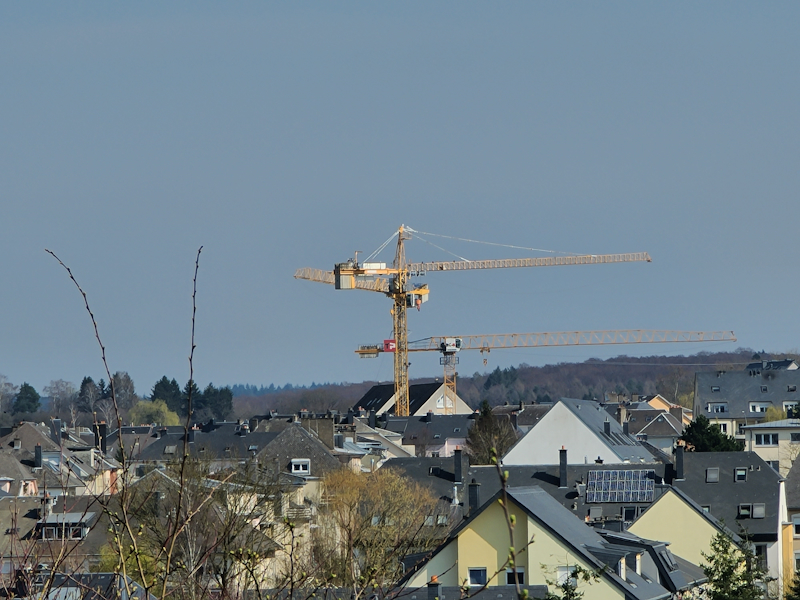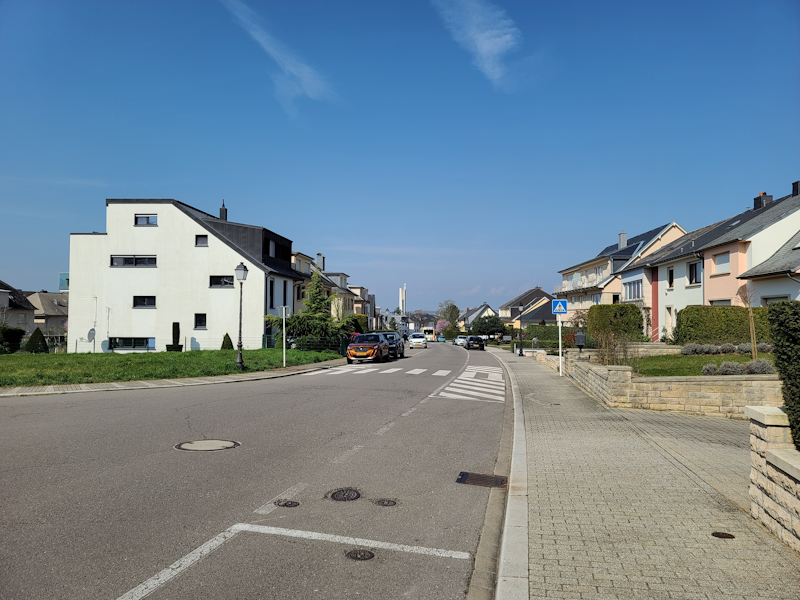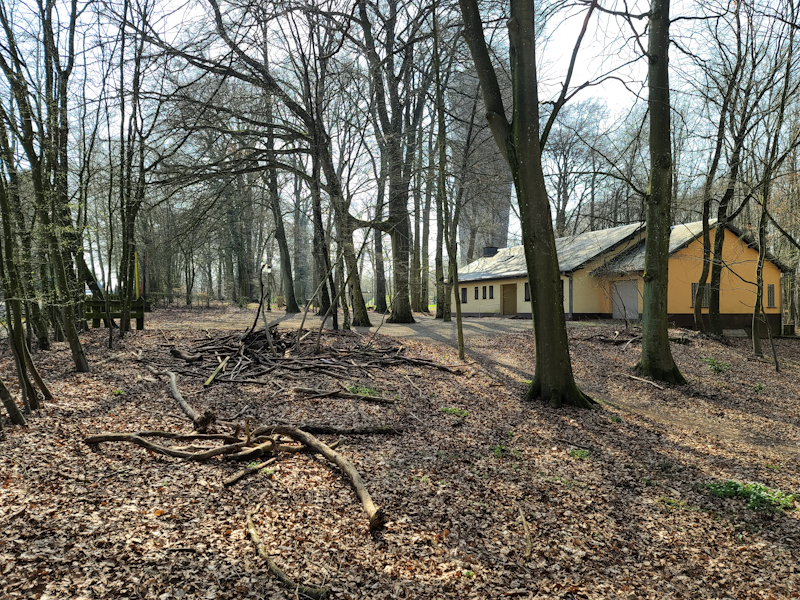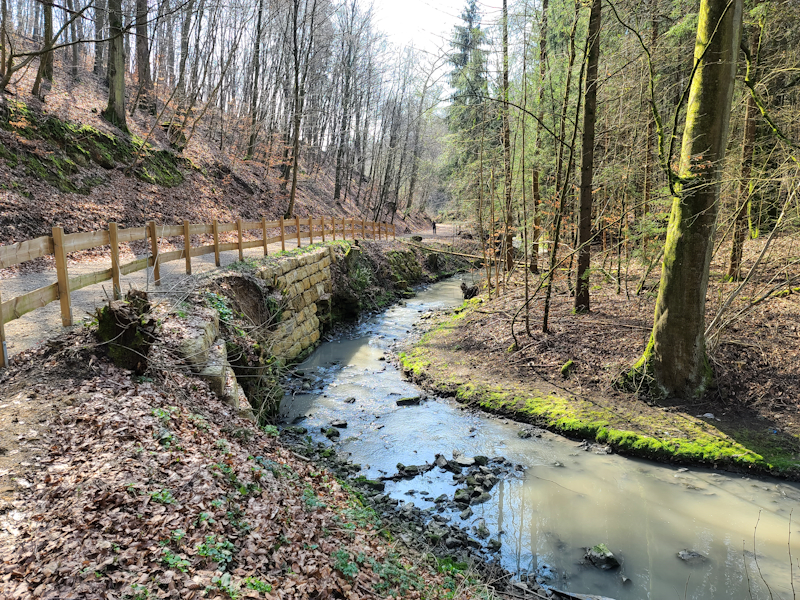The Samsung Galaxy S20+, S20 Ultra Exynos & Snapdragon Review: Megalomania Devices
by Andrei Frumusanu on April 3, 2020 9:30 AM ESTCamera: Daylight Evaluation: Far Sight
Naturally, the proof is in the pudding, and that’s where we’ll fully evaluate the S20 Ultras as well as the S20+. Last year we saw some larger camera quality differences between the Exynos and Snapdragon variants of the S10+; these differences slowly disappeared over the course of the year over numerous software updates, but there still remained some discrepancies here and there in terms of the software processing. This year, we’ll be putting the two S20 Ultras against each other in the same manner, and we also have the Exynos S20+ to check how that camera configuration compares.
I’ve noted that over the past years maybe I hadn’t been objective enough when it came to colour accuracy of the photo evaluations, so starting with the review today I want to do something else and add in another comparison point. The Fujifilm X-T30 with the standard 18-55mm kit lens will serve as a “reference” point in terms of the exposure and in particular the colour accuracy of the scenes – I particularly chose the Fuji because it had been praised as being amongst the best in the industry in this regard. The samples here are adjusted in terms of their exposure and dynamic range, but without any modification to the colour science.

[ Galaxy S20U - (S) ]
[ Galaxy S20U - (E) ]
[ Galaxy S20+ (E) ]
[ S10+ (S) ] - [ S10+ (E) ]
[ iPhone 11 Pro ] - [ Pixel 4 ]
[ Mate 30 Pro ] - [ P30 Pro ]
[ X-T30 ]
Diving right into the matter, let’s talk about the S20 Ultra’s zooming ability. Samsung here advertises up to 100x magnification, and I’ll pretty much discard this mode right out of the gate as being useless and a mere marketing gimmick. There’s essentially little to no advantage over a 30x magnification on the phone and it doesn’t even warrant samples as it just looks like a mess and no different than just magnifying the 30x shots digitally.
So, taking the 30x shots as the first comparison point, there’s only three phones in the line-up actually capable of such captures. Between the two S20 Ultra phones are very similar to each other, but there’s slight differences in terms of how they’re handling noise and sharpening. The Snapdragon unit has a bit more sharpening going for it but it’s hard to pick it as being outright superior. The S20+ is the only other phone capable to such magnification, and the difference to the S20 Ultras is quite large as there’s evidently a ton more pixilation and nowhere near the same spatial resolution – but that was to be expected.
At 10x magnification we again see the two S20 Ultra shots being similar in exposure, however there’s again differences in the detail. Here it’s more evident that the Snapdragon unit is using post-processed sharpening to the image, and there also appears to be some smearing of details as the Exynos unit does achieve to maintain some better textures on some elements.
Huawei’s P30 Pro and its own periscope telephoto module is the only unit that comes into play here as a competitor in terms of sharpness, but the S20 Ultras still beat it handily. The S20+ produces a useable result, but also lags behind the S20 Ultras – but is still far ahead of any other “conventional” zoom camera, with only the Pixel 4 competing in terms of result.
At 4x magnification which is the native level of the S20 Ultras, we again see the differences between the Snapdragon and Exynos units just pop right out at you, as the former’s sharpening is evident throughout the scene.
The S20+’s 3x result is the phone’s default mode when you tap on the telephoto zoom button when switching cameras, and the result does look respectable and is significantly more detailed than what you’d see from other 2-3x optical zoom modules, although the Mate 30 Pro’s 3x optics are much sharper, even if the sensor itself has some dynamic range issues.
At a 2x magnification, that’s where we see the S20 Ultra’s biggest weakness and problems. Samsung here is employing image fusion between the main and telephoto modules, using the sharper center image output of the telephoto module and merge it into the wider capture of the main unit. The problem here is that they’re doing this while the main module is at 12MP resolution, and the result is that the majority of the image looks like a pixelated mess as it has to do digital magnification on that 12MP image. It’s a massive disappointment and it’s here where the S20+’s dual-wide angle camera system comes to shine, as the 2x results is leaps and bounds better than on the S20 Ultras.
Not only are both S20 Ultras blurry here, but the Snapdragon S20 Ultra here goes haywire with the sharpening and the foreground vegetation is ridiculously over-processed, as if suffering from high image compression.

[ Galaxy S20U - (S) ]
[ Galaxy S20U - (E) ]
[ Galaxy S20+ (E) ]
[ Galaxy S10+ (S) ] - [ Galaxy S10+ (E) ]
[ iPhone 11 Pro ] - [ Pixel 4 ]
[ Mate 30 Pro ] - [ P30 Pro ]
[ X-T30 ]
In the next scene, again we see the two S20 Ultras dominate in terms of their sharpness and what they’re able to achieve, being far ahead of any other phone in terms of the achieved resolving power at high magnification.
The two Ultras again showcase big troubles at 2x magnification and are handily beat by every other phone in the line-up, even losing to last year’s S10.
Between the Snapdragon and Exynos S20U’s, the Qualcomm variant continues to showcase more post-processed sharpening throughout the scene on all camera modules. On both wide and ultra-wide shots, we see the Exynos able to retain better definition of textures in the brighter elements on the scene such as on the small and big concrete towers.

[ Galaxy S20U - (S) ]
[ Galaxy S20U - (E) ]
[ Galaxy S20+ (E) ]
[ Galaxy S10+ (S) ] - [ Galaxy S10+ (E) ]
[ iPhone 11 Pro ] - [ Pixel 4 ]
[ Mate 30 Pro ] - [ P30 Pro ]
[ X-T30 ]
The S20 Ultra’s telephotos are again quite incredible for a phone – far ahead of any other phone and handily beating my X-T30 on the regular kit lens. While the Snapdragon does pop out more and has more contrast in the details, it’s quite exaggerated and doesn’t feel as natural as the unsharpened results of the Exynos S20U.
On the main and ultra-wide, these differences continue. Vegetation might look more pronounced on the Snapdragon, but it loses out in texture retention to the Exynos throughout the scene.
This scene for some reason was very wrongly exposed on almost all the phones, with all of them getting a failing mark in that regard. Even though it’s in broad daylight, the S20 results barely have any elements in the upper 10-15% of the histogram in terms of exposure levels, the X-T30 better represents the scene as it was in reality.

[ Galaxy S20U - (S) ]
[ Galaxy S20U - (E) ]
[ Galaxy S20+ (E) ]
[ Galaxy S10+ (S) ] - [ Galaxy S10+ (E) ]
[ iPhone 11 Pro ] - [ Pixel 4 ]
[ Mate 30 Pro ] - [ P30 Pro ]
[ X-T30 ]
In the next shot there’s some issues that start arising for the S20+’s “telephoto” module, and that’s the optics. In this scene with an extremely bright backdrop against the sun with very high contrast due to the trees, we see very a very prominent haze around the high contrast elements. It’s as if the phone had a smudged lens, but it was actually clean. I noticed this happens in quite a for scenes for the S20+ and the only explanation I have is that it’s an optics issue with the lenses of this module.
This is also a good scene to start talking about the 108MP capture modes of the S20 Ultras. There’s a massive amount of detail here and these particular samples are around 50MB in size, as a warning before you open them.
Both phones are able to capture significantly more detail than in their default 12MP modes, however there a very stark differences between the Snapdragon and Exynos phones, with the latter being able to produce a much higher quality result with far more natural detail. I don’t know exactly what’s happening here, but it’s as if the Snapdragon picture was lower resolution and scaled up to 108MP, whereas the Exynos unit is closer to a native resolution shot.
Although there’s haze in parts of the shots, the 64MP shot of the S20+ here is doing a remarkable job in terms of keeping up with the 108MP cameras, and I’d even go so far to say that for large parts of the scene it’s actually able to resolve things with more spatial resolution than the S20 Ultra, particularly towards the edges of the scene where the Ultra just starts getting far too soft.

[ Galaxy S20U - (S) ]
[ Galaxy S20U - (E) ]
[ Galaxy S20+ (E) ]
[ Galaxy S10+ (S) ] - [ Galaxy S10+ (E) ]
[ iPhone 11 Pro ] - [ Pixel 4 ]
[ Mate 30 Pro ] - [ P30 Pro ]
[ X-T30 ]
This is another incredibly detail-rich scene, this time around with also more high dynamic range.
The S20 Ultras are quite different here in terms of their color renditions, with the Snapdragon being quite saturated. There’s also differences in exposure – although both phones were similar in their exposure time at 1/124 and 1/135th second, the Snapdragon chose ISO16 while the Exynos chose ISO50. There is some evident change in the HDR processing as the Exynos is able to better preserve the highlight of the sky and that part of the trees whereas it’s blown out on the Snapdragon.
The S20+ feels weird here on the main sensor as it produces a seemingly lower resolution image on the right side of the creek, with worse results than that of the S10 and other phones.

[ Galaxy S20U - (S) ]
[ Galaxy S20U - (E) ]
[ Galaxy S20+ (E) ]
[ Galaxy S10+ (S) ] - [ Galaxy S10+ (E) ]
[ iPhone 11 Pro ] - [ Pixel 4 ]
[ Mate 30 Pro ] - [ P30 Pro ]
[ X-T30 ]
The flower here is again a good example of the haze that’s present on the S20+’s 64MP lens module, again showing some weak optical characteristics.
When taking pictures of more close-up objects, the S20 Ultra’s huge sensor and shallower depth of field becomes more apparent as the background becomes significantly more out of focus and blurred out. The problem is that isn’t not so much a smooth bokeh more appears more as chromatic aberrations and quite a bit of a mess.
The phones are also having trouble with the exposure and HDR and highlights of the vegetation is far too bright, the Pixel 4 and iPhone 11 Pro are doing a much better job here.










137 Comments
View All Comments
toyeboy89 - Friday, April 3, 2020 - link
I'm really amazed in the fact that the iPhone XR is still beating snapdragon 865 in GFXBench in both peak and sustained performance. I am hoping the OnePlus 8 has better sustained performance.TMCThomas - Friday, April 3, 2020 - link
Amazing review! Always wait for this one before getting a new samsung. And I won't be getting any of the s20 phones. For me the kind of feel like "beta" phones. The 120hz which is not quite ready for 1440p yet, the underutilized 108mp camera, the space zoom which is blurry, the camera hole still being there the big camera bump and so on. I think all these features and more could be way more refined with the next galaxy s which I'll be waiting for. Also the poor exynos 990 performance especially the GPU part is just unacceptable to me. Especially with it probably being a lot better next year, so I'll skip this yearwheeliebin - Friday, April 3, 2020 - link
Thanks Andrei, really good review!I have read many users complain about extra crazy post-processing on the S10/S20 series when there is a face detected in the frame. i.e. the phone will apply an aggressive 'smooth skin' filter that you can't disable unless you shoot RAW. I was hoping that your review might touch on this however there were no people in your example shots so perhaps you didn't get a chance to experience the problem. I wonder if you have heard of this issue and can replicate it yourself with the S20 range?
anonomouse - Friday, April 3, 2020 - link
Hi Andrei, did you also run the bandwidth and MLP sweeps from previous reviews? Last year you noted the Snapdragon 855/A76 had peculiar behavior in the L1, and it would be also interesting to see if there are any MLP changes in both the SD865 and the Exynos.anonomouse - Friday, April 3, 2020 - link
Also, any idea why the new scores for these in 403.gcc seems to be worse than their previous generation products? In particular the score for the SD865 in these S20s is substantially worse than the SD865 score from the QRD preview article.Andrei Frumusanu - Saturday, April 4, 2020 - link
Yes I know. I don't know why that happens. I also got a V60 now and the scores there are higher, I'm wondering if there's something with Samsungs shared libraries.anonomouse - Sunday, April 5, 2020 - link
What type of compile flags are used for these binaries? Are they the same for all of the tested binaries (or even same binary on each given platform)? Are LTO or PGO used (and if not why not)?I'm also not convinced of this statement from the article:
"I had mentioned that the 7LPP process is quite a wildcard in the comparisons here. Luckily, I’ve been able to get my hands on a Snapdragon 765G, another SoC that’s manufactured on Samsung’s EUV process. It’s also quite a nice comparison as we’re able to compare that chip’s performance A76 cores at 2.4GHz to the middle A76 cores of the Exynos 990 which run at 2.5GHz. Performance and power between the two chips here pretty much match each other, and a clearly worse than other TSMC A76-based SoCs, especially the Kirin 990’s. The only conclusion here is that Samsung’s 7LPP node is quite behind TSMC’s N7/N7P/N7+ nodes when it comes to power efficiency – anywhere from 20 to 30%."
Both the energy consumed and the performance scores for both of these A76's seem to also very closely track the "mid" 2.43Ghz A76's on the TSMC-fabbed SD855 - all of which have similar L2's and similar frequencies, but possibly differ significantly (to the point of being suboptimal on latency) on the memory hierarchy and SoC beyond that - which greatly affects many of the SPEC workloads. All of these may also have implementation targets. Given this, is it really conclusive that the Samsung process is truly 20-30% worse in energy efficiency? Granted, things will probably not look pretty next year when TSMC is on a true 5nm and Samsung is not.
Andrei Frumusanu - Monday, April 6, 2020 - link
The test is just -Ofast without any other addition. LTO wasn't/isn't in a good state on the Android NDK - it's something to look into in maybe a new binary revision.As for the 855 figures, well, that's also on an earlier 7nm. HiSilicon did a lot better in terms of they physical implementation. If not against N7, 7LPP clearly has a disadvantage against N7P/N7+.
Andrei Frumusanu - Saturday, April 4, 2020 - link
I'll add them in, that test takes a whole day and I needed the phones doing battery tests and other stuff.dad_at - Saturday, April 4, 2020 - link
Again, your S10+ Exynos results in pc mark are false as of 2020. In performance mode I easily get 9500 work 2.0 overall, about 9600 in browser bench, 21K in photo editing. PC mark in general is inconsistent, irrelevant benchmark, not representative of actual performance in daily usage. The same about these ancient SPEC synthetics. No one uses these for performance evaluation now.